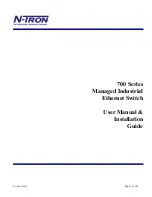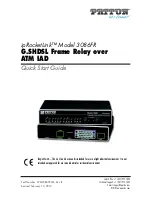
DES-2218 Ethernet Switch User’s Guide
Introduction
5
Network
Network diameter, which is the distance between two end-stations in the
same collision domain, is the primary difference between traditional Ethernet
and Fast Ethernet. Due to the increased speed in Fast Ethernet and
adherence to the EIA/TIA 568 wiring rules, the network diameter of a Fast
Ethernet collision domain is limited to 205 meters; in contrast, the maximum
10BASE-T Ethernet collision domain diameter can be up to 2500 meters.
Hubs
Unlike 10BASE-T hubs, which are all functionally identical, Fast Ethernet
repeater hubs are divided into two distinct types: Class I and Class II. A
Class I hub repeats all incoming signals on one port to the other ports by first
translating them to digital signals and then retranslating them back to line
signals. These translations are necessary when connecting various network
media to the same collision domain, such as when combining two wire-pair
100BASE-TX media with four wire-pair 100BASE-T4 media. Only one
Class I hub can exist within the same collision domain, thus this type of hub
cannot be cascaded. A Class II repeater, on the other hand, immediately
repeats all incoming line signals on one port to the other ports; no
translations are performed. This type of hub connects identical media to the
same collision domain; for example, TX to TX. At most, two Class II hubs
can exist within the same collision domain. The cable used to cascade these
hubs is called an inter-repeater link (IRL).
As mentioned earlier, stackable hubs can be used to increase the number of
available nodes in a collision domain. An entire hub stack counts as a single
repeater.
Connectivity Rules
Fast Ethernet networks should respect the following limitations:
















































